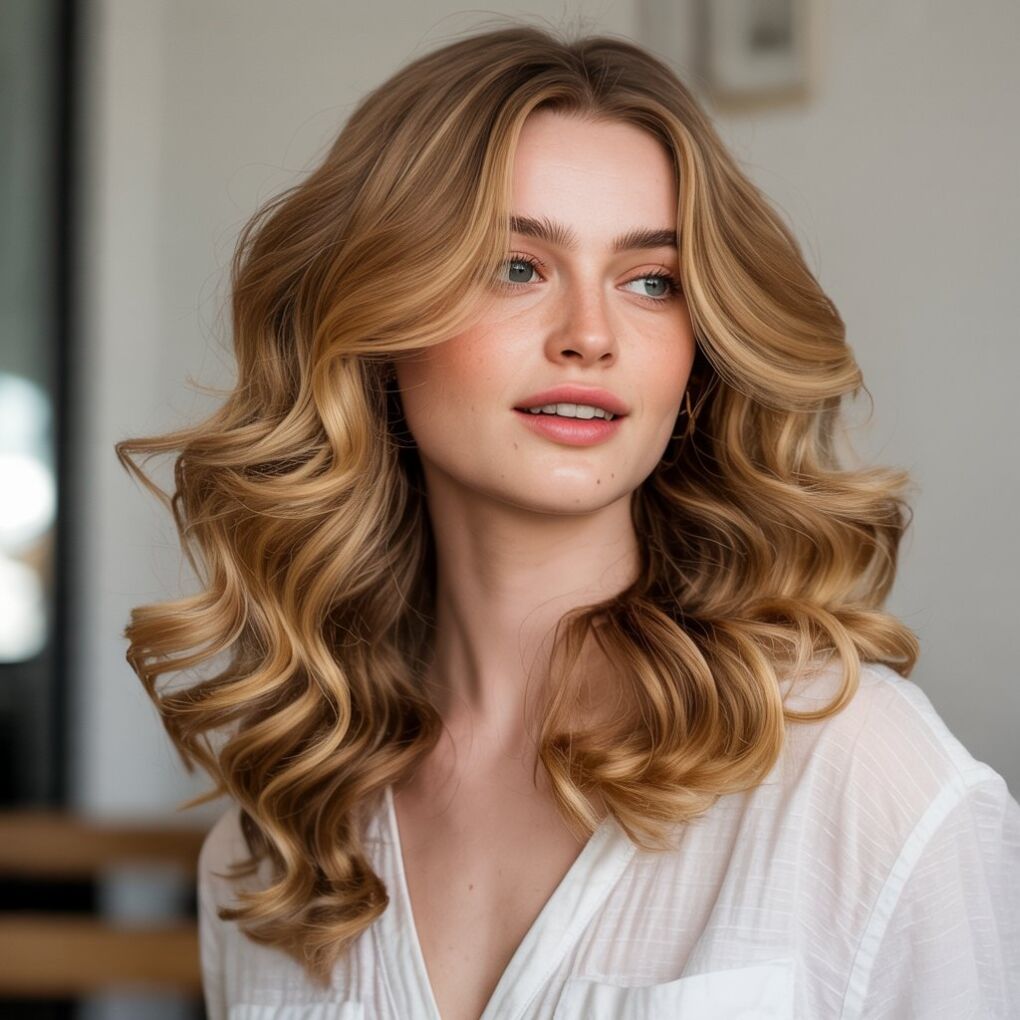Blending wavy halo extensions with natural waves or curls doesn’t have to be complicated. The key to a seamless look is ensuring both your extensions and your natural hair share a similar texture and wave pattern, and then styling them together for a unified finish. With the right approach, it becomes nearly impossible to tell where natural hair ends and the extensions begin.
Many find that using a curling wand or iron to gently wave both their own hair and the extensions at the same time leads to the most natural blend. Adding some texture with soft curls or waves helps the hair and extensions merge, hiding any lines of separation.

Key Takeaways
- Matching textures creates a natural blend between hair and extensions.
- Styling both natural hair and extensions together helps achieve a seamless look.
- Consistent maintenance keeps the blend looking fresh and undetectable.
Step-by-Step Guide to Blending Wavy Halo Extensions with Natural Waves or Curls
Blending wavy halo extensions with hair that already has natural waves or curls requires careful matching, preparation, and placement. Achieving a seamless finish depends on using the right techniques and tools throughout the process.
Choose and Color Match Halo Extensions
Selecting the correct shade and texture is essential for a natural look. The halo extensions must closely match not only the base color but also any highlights or lowlights in the natural hair. Always compare the extension to hair ends rather than roots for the best match.
Pay attention to the wave pattern. Choose halo hair extensions that reflect the tightness and direction of natural waves or curls. If necessary, use a wide-tooth comb to gently loosen or define the extension’s wave pattern for a closer match. In cases where an exact color is unavailable, extensions may be professionally toned or dyed. For those researching products, visit here to buy wavy hair extensions that are well-suited for blending with textured hair types.
Prepare Your Natural Hair for Blending
Start by detangling the hair using a wide-tooth comb to prevent pulling or frizzing the wave pattern. Wash and condition as usual, then apply a light leave-in conditioner or styling cream to reduce flyaways and add definition. Let hair dry to about 80% and set the natural waves or curls with a diffuser or by air drying. Styling tools, like curling wands, can be used only if needed, and should match the curl size of the extension. Avoid using heavy oils right before installing extensions, as they can affect grip.
If the natural hair is a mix of waves and straight sections, touch up inconsistent areas using a curling tool for a consistent base. Volume and length will blend best on textured hair that is as uniform as possible before extensions are added.
Secure and Position the Halo Hair Extensions
Adjust the halo wire so that it fits snugly yet comfortably over the crown, slightly behind the hairline and under the occipital bone at the back of the head. Section off the top layer of natural hair using a tail comb and clip it away before placing the halo. Once positioned, release the top layer and use a wide-tooth comb or fingers to blend it with the extensions. For added blending, gently tousle both natural hair and extensions together. If needed, use a curling wand to unify the wave pattern between the natural hair and halo extensions.
Check the back and sides with a mirror to confirm that no wefts or wires are visible. Take time to ensure the blend is even, especially around the perimeter, for the most discreet result. If desired, lightly mist with a flexible hold hairspray to maintain the blend throughout the day.
Styling and Maintenance for a Seamless Halo Extension Blend
Maintaining a seamless blend between wavy halo extensions and natural waves or curls requires attention to technique and product choices. Proper heat styling, gentle detangling, and washing routines help keep both the extensions and natural hair looking healthy and cohesive.
Use of Curling Iron and Heat Protectant Spray
Styling tools play a significant role in blending halo extensions with natural waves or curls. A curling iron should be set to a moderate heat (usually 300–350°F for human hair extensions) to avoid damage. Before styling, a heat protectant spray is essential to protect both the extensions and natural hair from breakage or dryness.
To create a uniform wave, alternate curl directions and blend sections of natural hair with the extension hair. Holding each curl for 8–10 seconds is often best. After curling, allow hair to cool fully to set the style and help both textures merge naturally.
Brushing and Detangling Methods
Using the right tools keeps extension hair smooth without causing shedding or tangling. A wide-tooth comb or a soft-bristle brush is recommended. Start detangling from the ends of the hair and work upward, separating small sections for easier management.
Frequent and gentle brushing—especially before and after wearing the halo—helps maintain the blend. Avoid pulling harshly on the extension wire, as this can shift its placement and create an unnatural separation. Keeping the extensions tangle-free supports a seamless look.
Conclusion
Blending wavy halo extensions with natural waves or curls is achievable by matching texture, using proper styling techniques, and securing the extension for a seamless look. Consistency in quality and choosing the right length also play important roles in creating a cohesive appearance. With the right approach, individuals can enhance their hairstyle without compromising natural movement or comfort. Attention to detail ensures the extensions blend smoothly, providing a balanced and natural finish.
